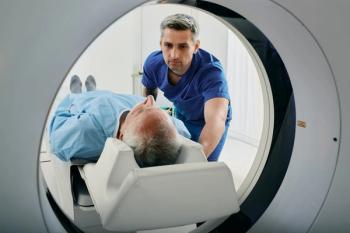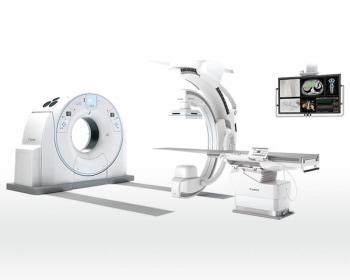
Vendors add zip to PET technology
The clinical argument for speed may be up in the air, but the technological one appears settled. At this year's RSNA meeting, Siemens, CTI, and Philips are ready with systems that deliver faster scans or more rapid image reconstructions. The RSNA exhibit hall also plays host to PET/CT's past and future, as the work-in-progress 16-slice version of GE's Discovery LS appears as a commercial product and CPS talks up-and may even show off-its multihead R&D platform.
The clinical argument for speed may be up in the air, but the technological one appears settled. At this year's RSNA meeting, Siemens, CTI, and Philips are ready with systems that deliver faster scans or more rapid image reconstructions. The RSNA exhibit hall also plays host to PET/CT's past and future, as the work-in-progress 16-slice version of GE's Discovery LS appears as a commercial product and CPS talks up-and may even show off-its multihead R&D platform.
Philips is on the floor of McCormick Place with the Gemini 16. Cleared by the FDA in July, the system combines a high-performance PET scanner with the company's 16-slice Mx8000IDT. Gemini 16 integrates the two operator consoles into a single workstation. PET and CT components can be used as either integrated or stand-alone systems. Individual gantries remain intact, although major subsystems are located within a common integrated housing. PET and CT images are registered and overlaid by fusion software.
Siemens and CTI benefit from technological improvements made by their supplier, joint venture CPS Innovations. CPS earlier this year released a digital imaging chain, called Pico-3D, that promises to at least double the count-rate performance of the existing line of PET/CT systems based on the fast scintillator LSO (lutetium oxyorthosilicate).
"When we went to LSO, we slightly modified our electronics for these new scanners from those using BGO (bismuth germanate)," said Ronald Nutt, Ph.D., president of CPS. "Although the electronics were improved, they were not optimized. The Pico electronics are made precisely to fit the parameters of LSO."
Pico-3D, which was developed by CPS' sister company Concord Microsystems, digitizes signals from LSO detectors every 500 picoseconds. An ultrafast sampling technique allows better scatter rejection and higher contrast imaging. A five-nanosecond coincidence window further improves the rejection of random counts.
In development at CPS is a multihead R&D platform. Unlike the stop-and-shoot method now in place, spiral PET scans would acquire data as the patient moves continuously through the gantry. Spiral PET promises decreased scan time and increased image quality through improved uniformity.
Newsletter
Stay at the forefront of radiology with the Diagnostic Imaging newsletter, delivering the latest news, clinical insights, and imaging advancements for today’s radiologists.



























